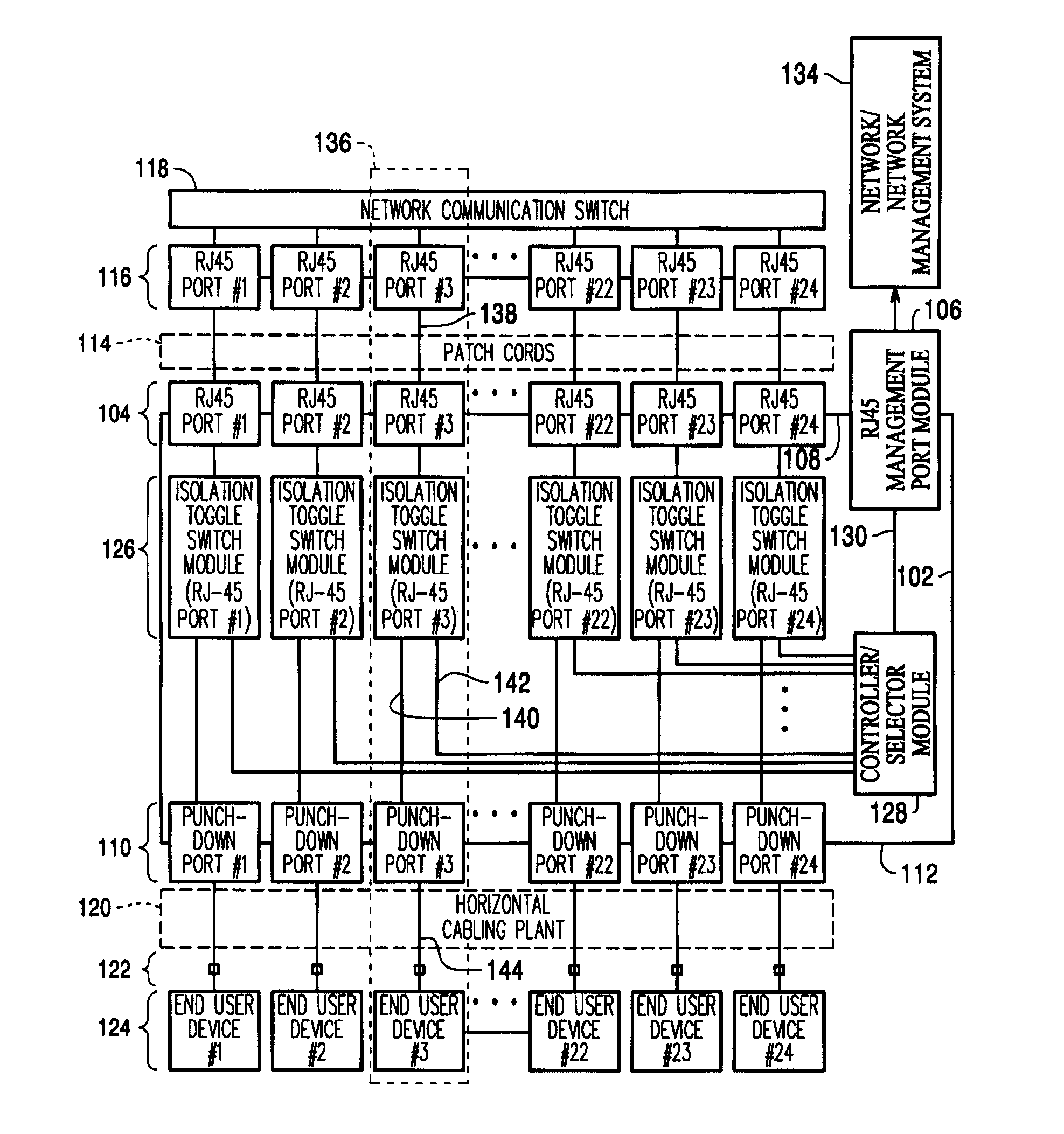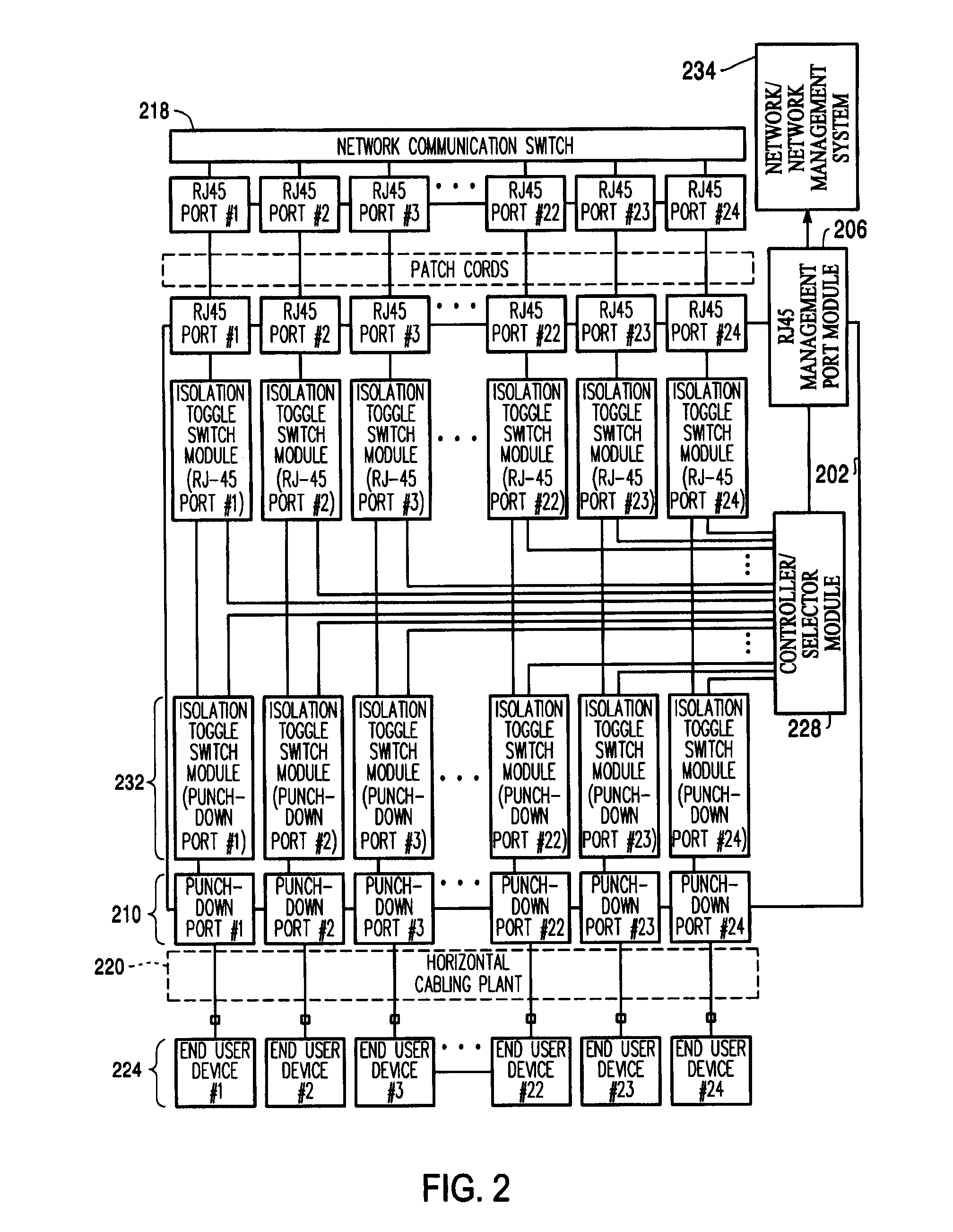High Performance Three-Port Switch for Managed Ethernet Systems
a technology of managed ethernet and switch, which is applied in the direction of data switching networks, frequency-division multiplexes, instruments, etc., can solve the problems of improper installation of cable terminators, relative short cables, poor connection, etc., and achieve the effect of quick and easy operation
- Summary
- Abstract
- Description
- Claims
- Application Information
AI Technical Summary
Benefits of technology
Problems solved by technology
Method used
Image
Examples
Embodiment Construction
[0020]FIG. 1 is a system-level block diagram of an exemplary patch panel 102 capable of isolating and supporting the analysis of a cable deployed within an operational cable plant. As shown in FIG. 1, patch panel 102 may include a front patch panel face 108 that may include a plurality of RJ-45 patch panel ports 104 and an RJ-45 management port 106. Patch panel 102 may further include a rear patch panel face 112 that may include a plurality of punch-down ports 110. As shown in FIG. 1, each of the plurality of RJ-45 ports 104 on front patch panel face 108 may connect to one of a plurality of ports 116 on a network communication switch 118 via one of a plurality of patch cords 114. As further shown in FIG. 1, each of the plurality of punch-down ports 110 may connect via one of a plurality of cables in horizontal cabling plant 120 to an end-user device jack 122. Each end-user device jack 122 shown in FIG. 1 may support a connection from an end-user network device 124 to a network via n...
PUM
 Login to View More
Login to View More Abstract
Description
Claims
Application Information
 Login to View More
Login to View More - R&D
- Intellectual Property
- Life Sciences
- Materials
- Tech Scout
- Unparalleled Data Quality
- Higher Quality Content
- 60% Fewer Hallucinations
Browse by: Latest US Patents, China's latest patents, Technical Efficacy Thesaurus, Application Domain, Technology Topic, Popular Technical Reports.
© 2025 PatSnap. All rights reserved.Legal|Privacy policy|Modern Slavery Act Transparency Statement|Sitemap|About US| Contact US: help@patsnap.com



